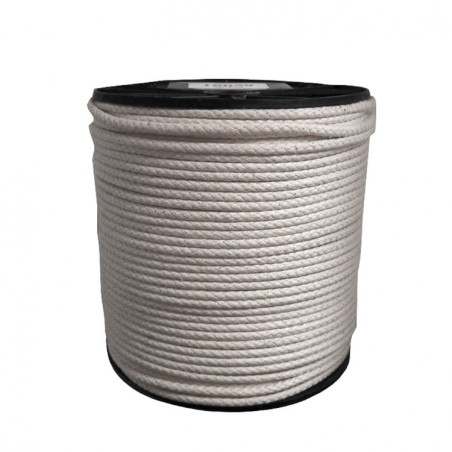In general, production in the leading pig-producing countries has progressively become more homogeneous in the last decades. The process of globalization and growing interrelation between countries has led to facilities, genetics, and other aspects becoming more and more similar. However, there are still important differences in aspects such as the regulatory framework, organization, and even the production "philosophy", which end up reflected in the indicators of production efficiency.
Within this context, we have decided to compare two models of production on sow farms: the Spanish and U.S models. For this purpose, we are going to use 2019 data from a PigCHAMP database with joint data from Spanish and U.S. farms, with a total of 1,088,486 sows and 627 farms (365 U.S. and 262 Spanish farms), which we consider to be a representative sample of production in both countries. The most important characteristics of both systems can be defined as follows:

United States:
- World's second-largest pork producer (6.47 million sows and 12.53 million tonnes of pork produced in 2019).
- Lower environmental restrictions, and absence of maximum farm sizes: larger average farm size (2,606 productive sows per farm on average in the study database).
- Absence of animal welfare regulations of general application , although this is changing rapidly.
- Tendency to maximize farrowings per sow per year, which implies short lactation lengths.
Spain:
- World's fourth-largest pork producer (2.58 million sows and 4.64 million tonnes of pork produced in 2019).
- Significant environmental restrictions, specific legislation on maximum farm sizes: smaller average size (523 productive sows per farm on average in the study database).
- Mandatory animal welfare regulations.
- Restrictions on minimum lactation length (28 days unless prescribed otherwise).
- Farrowings per sow per year are constrained by these restrictions.
As an initial overview, Figure 1 shows the comparative productivity tree for both countries. This tree shows and relates the main key production indicators (KPIs), breaking down the numerical productivity, measured in piglets weaned per mated sow per year, into the indicators of both the farrowing and gestation branches.

Figure 1. Productivity tree, Spain vs USA, 2019.
As a complement to the comparative tree, the following table shows the results of the statistical analysis of these same KPIs, with their respective significance values (P).
Table 1- Statistical analysis (NPAR1WAY from SAS) of KPIs, Spain vs USA, 2019.
| Spain | United States | P | |
|---|---|---|---|
| Pigs weaned/mated sow/year (nº) |
26.93 |
26.08 | 0.0127 |
| Pigs weaned/sow (nº) | 11.83 | 11.26 | <0.0001 |
| Born alive/litter (nº) | 13.67 | 13.20 | 0.0232 |
| Calculated PWM (%) | 13.16 | 14.55 | <0.0001 |
| Total born/sow (nº) | 15.17 | 14.70 | 0.0631 |
| Stillborns/sow (%) | 8.11 | 7.66 | 0.0489 |
| Mummies/sow (%) | 1.75 | 2.54 | <0.0001 |
| Litters/sow and year (nº) | 2.28 | 2.32 | 0.0327 |
| Non-productive days (nº) | 40.90 | 49.06 | <0.0001 |
| Lactation length (days) | 25.16 | 20.65 | <0.0001 |
| Wean to first service interval (days) | 6.41 | 7.46 | <0.0001 |
| Farrowing rate (%) | 83.21 | 84.09 |
0.0394 |
| Returns (%) | 9.55 | 6.21 | <0.0001 |
P>0.05 No significant difference
0.05>P>0.0001 Significant difference
P<0.0001 Very significant difference
Highlights of the comparison:
- Numerical productivity is slightly higher in Spain, with 0.85 more piglets weaned per sow per year (26.93 vs. 26.08).
- In the gestation branch lactation length is clearly shorter in the USA, 4.51 days less than in Spain (20.65 days vs. 25.16), and both returns and, to a lesser extent, farrowing rate, are better in the USA. However, the reproductive rate, measured in litters per sow per year, is only slightly higher in the USA (2.31 vs. 2.28). The reason is that in the U.S. each sow accumulates on average 8.16 more non-productive days per year (49.1 days vs. 40.9).
-
The greatest difference in performance is observed in the farrowing branch. The starting point, i.e., prolificacy, is higher in Spain than in the USA (15.17 vs. 14.70 total born) but, in addition, both farrowing losses, taken as the sum of stillbirths plus mummies (9.86% in Spain, 10.20% in the USA) and losses during lactation (13.16% in Spain, 14.55% in the USA) are slightly better in Spain. Hence, the final farrowing result, measured as piglets weaned per sow, is 0.57 piglets better in Spain (11.83 vs. 11.26).
As a first overall conclusion, we can state that the higher reproductive rate achieved in the United States, associated with a shorter lactation length, is offset by Spain's higher performance both in the farrowing area and in some aspects of gestation so that the numerical productivity measured as piglets weaned per sow per year is slightly higher in Spain.
In future articles, the different indicators will be analyzed in greater depth, and other aspects will be studied (replacement, culling and death rates, distribution of pre-weaning mortality, and weaning weights) in which there will also be interesting differences.






